Ever wanted to grow carrots but felt that your allotment or garden was too small? Or maybe all you have to work with is a sunny porch? Well, believe it or not, carrots are super easy to grow in containers, and if you’re like us, you’ll be able to get a harvest all year round!
Materials Needed
- 6-9 litre planting pots
(These are especially easy to get from March-June if you have a Morrison’s close to you. They sell discarded flower buckets for less than £1 per 10 or 20 buckets!)
- gravel or chippings
- drill
- multi-purpose compost
- sharp sand
- seed compost
- fresh carrot seed
How to Set Up Your Pots
- Once you have your 6-9 litre flower pots handy, check to see if they have drainage holes at the bottom. If they don’t, you’ll need to drill a few holes to make sure the water drains well.
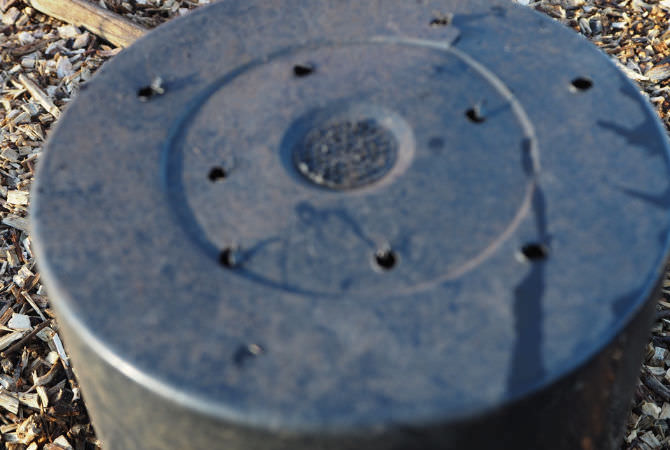
- Next, lay a thin layer of gravel or chippings at the bottom of your flower bucket. This will help the drainage and prevent the holes from getting clogged.
- Mix your favourite multi-purpose compost together with the sharp sand at a 50-50 ratio (half compost and half sand). Add this mixture to the flower bucket leaving 4 inches or so from the top. (The sand not only helps with drainage, it makes the soil nice and light so your carrots can grow straight.)
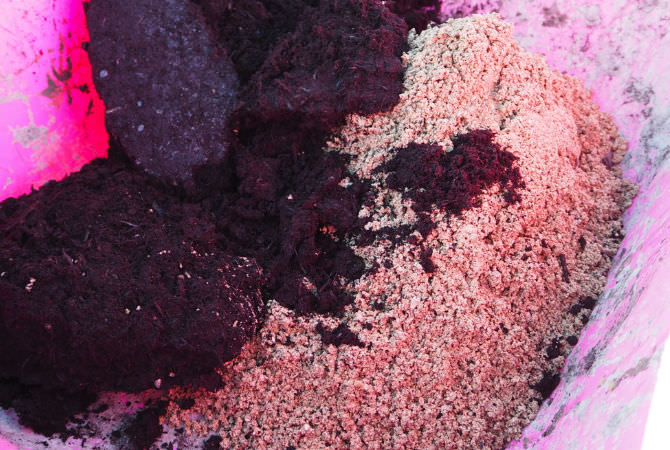
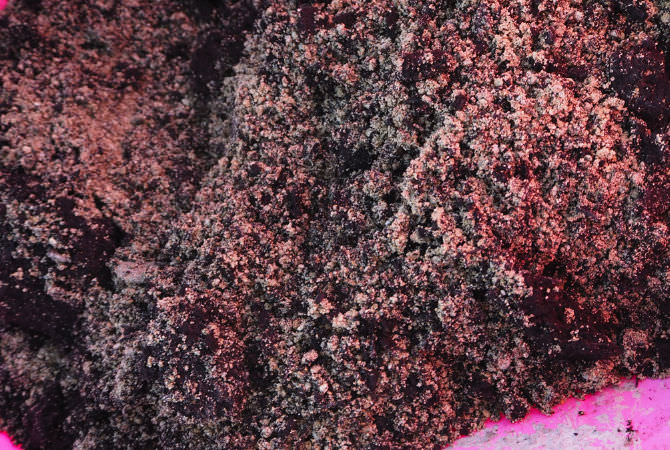
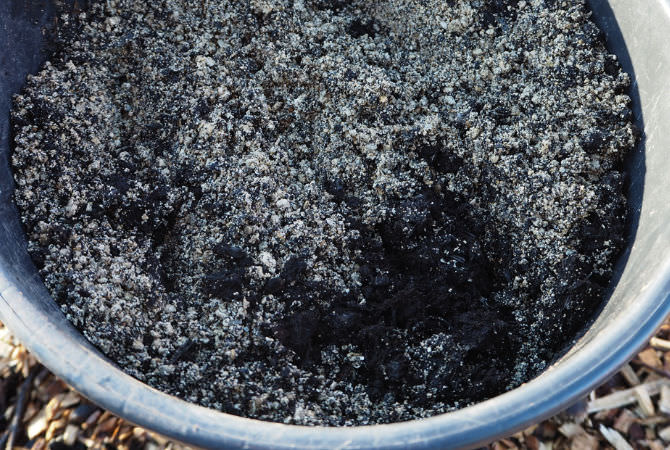
- Add a thin layer of seed compost about an inch thick to the top of your sand-compost mixture. (This compost is ideal for seed sprouting.)
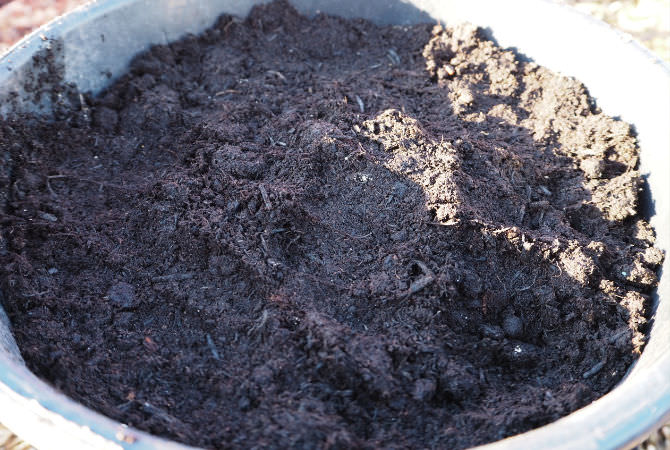
- Now it’s time to add your seed. Choose a variety that is small and suitable for container growing. We like to plant Chantenay Red Core because it’s a smaller carrot and needs next to no looking after. After July we usually switch Amsterdam Forcing, a closer-loving carrot. Place 20-30 seeds on top of your compost. You can sow more or less, but we like to sow more just to allow for germination failure. It also let’s us thin out the weaker carrots seedlings. You can also use this method with Parsnips and Salsify for hasttle free growing.
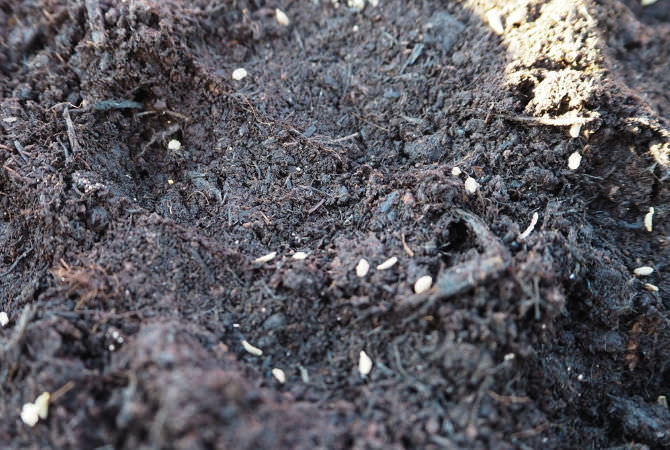

- Cover with another thin layer of seed compost.
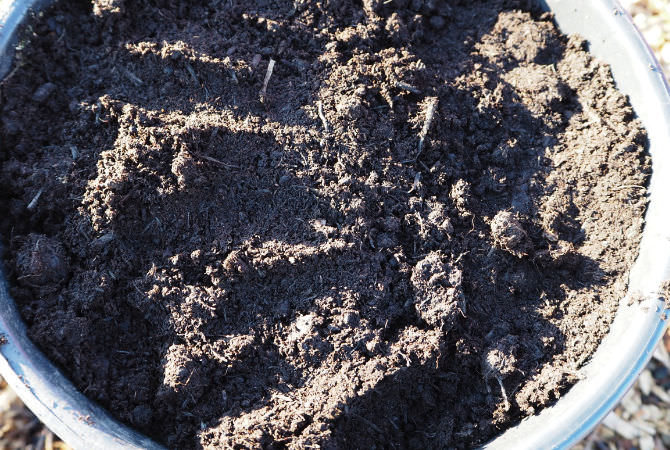
- Water and keep moist until the seeds germinate.
Tips and Tricks
Sowing in Succession
How many carrots you’ll need to sow really depends on how many you eat—we sow two of these buckets every week, which gives us a decent carrot supply from July onwards for the rest of the year. Keep the carrots well watered and in the buckets until you need them, but this should give you enough carrots to last a week without having too much of a glut in one go.
Carrot Protection
To extend your planting season, be sure to protect your carrots at the beginning and end of the year by moving them into a greenhouse or polytunnel. They will do well with a bit of frost (carrots taste sweeter once the frost hits them), but containers freeze much ‘harder’ than the ground and your carrots will need to be protected from any heavy freezes.
Also, once August and September come around the ugly carrot fly shows it’s face. The easiest way to avoid carrot fly damage is to leave your carrots undisturbed (the carrot fly is drawn to carrots once you start harvesting them). You can harvest a full bucket full at once, but make sure you don’t dip into multiple buckets at once. Also, if the carrot fly is prevalent in your area, you can net your buckets to keep the carrot fly out.
Again to avoid the carrot fly moving later sowings of carrots under cover or to your grenhouse / polytunnel will help deter the carrot fly however just be aware that under glass the carrots will require more water.
Growing Carrots all Year Round
If you have a way to heat and light your carrots, you’ll be able to grow them all year round. We use a few LED day light bulbs and a small heater to keep ours going. If you don’t have access to any lighting growing switching to a carrot variety such as Autumn King 2 and making your sowings no later than Mid September will give you a crop towards the start of spring. Start sowing in buckets every week from March – September 15th
Overall, we love growing our carrots in containers. It’s not only a simple, hassle-free method, it frees up the ground for other crops. You can even try growing parsnips and other root vegetables this. Try it out and let us know how it goes! And not just Carrots this works well with Parsnips and Salsify.

9 thoughts on “A Simple Way to Grow Your Carrots in Containers”
When you say “sow two of these buckets every week, which gives us a decent carrot supply from July onwards for the rest of the year.” How long do you sit these buckets for?
How many carrots would an average bucket yield?
Well take Chantenay that takes around 75 days to mature so from each sowing we expect a crop every 70-80 days or so to be ready, if you move them in the glasshouse or polytunnel depending on weather it can be quicker. The reason we sow them so often every week is you only need the good weather to get them to germinate and to start growing towards the end of the year as long as you keep them away from Carrot fly (towards the end of summer) and frost free you can continue to harvest carrots as you need – also with Chantenay although its a small carrot the longer you leave it does swell and grow a little bit bigger. YOU could I suppose sow a glut and then store them in sand however I prefer to take them as I need.
Plus doing them in buckets we can control the germination, the growing conditions and although wonky veg is cool peeling can be a pain and can result in waste.
I try and sow 30-45 carrots per bucket aiming for at least 20 to germinate. I then thin these out after a few weeks and use the small baby carrots in simple salads leaving room to grow a larger crop.
I can’t get sharp sand. Is it worth using building sand?
Building sand is a little heavy so as long as you use a lighter ratio to soil mix it should be fine! 🙂
Building sand is not recommended as it usually contains a higher ratio of salt as it is not washed to remove it. This of course changes the chemical make up of the growing environment.
Can you use beach sand if washed?
Can I use playsand. i’ve inherited a sandpit on my plot!
What do you do with the sand/compost mix after you’ve harvested the carrots please?
Can it be composted?
Hi Sue,
Yes you can. However we tend to use it in our potato mix and it goes back into new buckets! But yes it can be composted 🙂